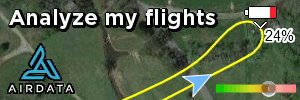I have a Mavic 4 Pro and I want to do hyperlapses of sunrises skimming close to water. Here is an example but in this sequence the drone is 50' to 100' above the water. I'd like to be only a few feet but I have concerns about doing that. Indeed, I'd like to be so low that the collision avoidance from below is red but that seems to halt forward movement while doing a hyperlapse. I haven't investigated this much. On one occasion, after starting a hyperlapse (using course lock), I lowered the craft down until the red warning came on and at that point the craft was stuck. It would not move. I had to stop the hyperlapse, then I could raise the craft up and fly home.
Can others comment on their experiences on flying low over water either while doing a hyperlapse or not -- with and without collision avoidance activated?
Thank you
Can others comment on their experiences on flying low over water either while doing a hyperlapse or not -- with and without collision avoidance activated?
Thank you












